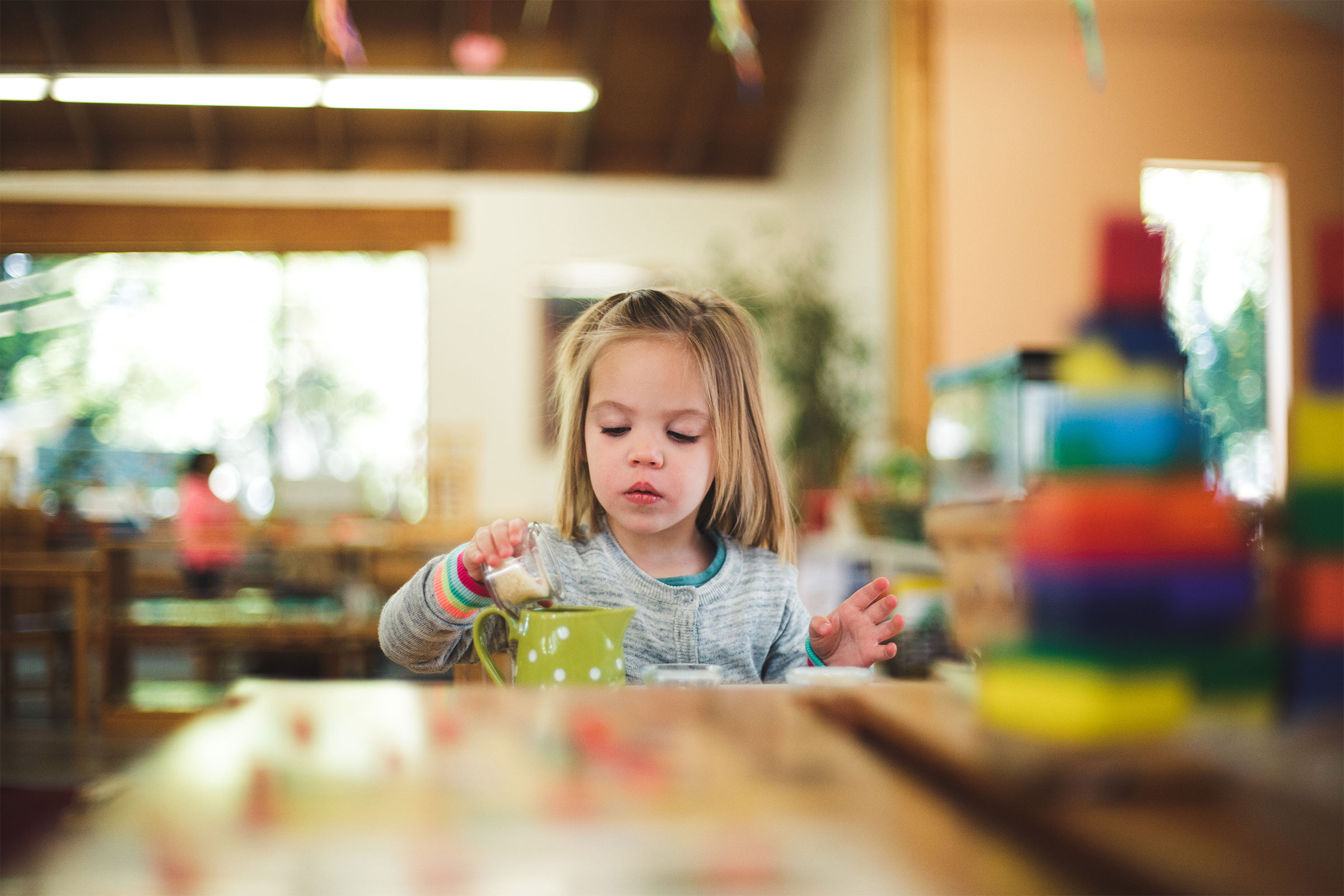With the very young child, we keep the “rules”/”limits” consistent, clear and limited. For example, in a community of toddlers we have one rule: “You may do nothing to hurt yourself, others or the environment.” As children under the age of 2.5 are very ego-centric, we have to accept that the acceptance of limits is an evolving process. We simply state the limit and try to engage the child in some activity that they are interested in. We are absolutely firm in our communication about harming others and the environment.
For a 3-6 year-old, we state the same or a similar rule/limit to the one for 0-3 year-olds. We also inform children of this age about societal expectations regarding behaviour through a series of experiences we call Grace and Courtesy experiences. How to greet, say goodbye, offer a seat to someone, say please, thank-you, excuse me. All the Grace and Courtesy experiences are culturally relevant. We also talk with the children about feelings, about how to use words instead of our body to solve challenges.
There are consequences when a child does not follow the given limits. One consequence may be that they work with the teacher instead of other children; another consequence may be that they are not allowed to use materials if they harm the material.
Montessori talked about three levels of Obedience in children, a developmental progression. In the first stage, children are obedient to an inner drive that pushes them to interact with the environment. We can request them to do something they want to do as a way of “practising” obeying. The second stage occurs when children know the rules, most of the time obey them but sometimes can’t. This is very challenging for most adults. This stage passes. The last stage is when a child knows the rules and can obey them, even when they would rather not. This means they have had consequential experiences usually for not obeying the rules.
For elementary aged children not obeying the rules is usually dealt with by calling the children together and discussing the rules of the class, consequences for not obeying those rules. These situations are firstly dealt with by the children. If the situation does not resolve itself, then the teacher steps in a discusses the situation with the perpetrator.
